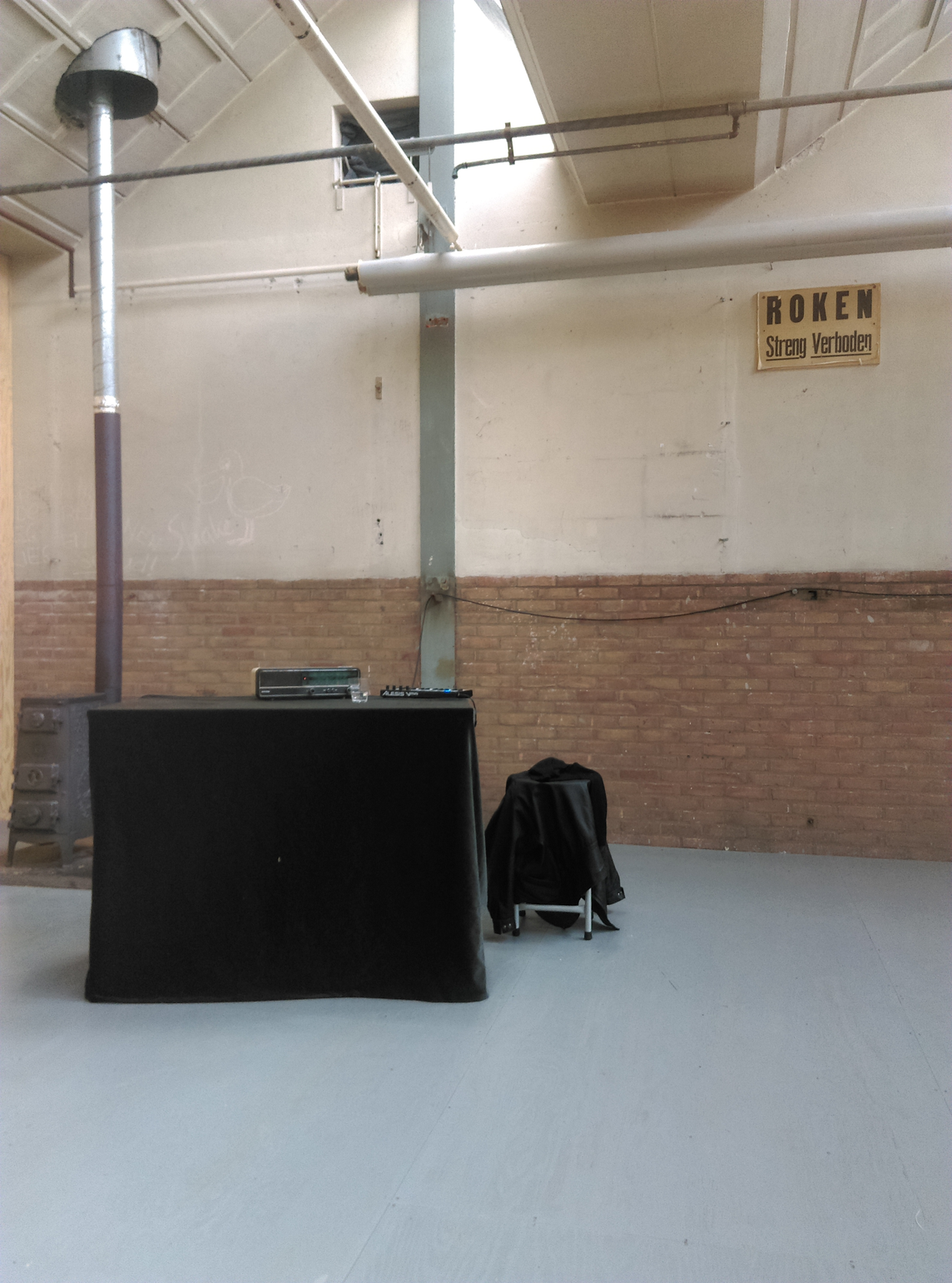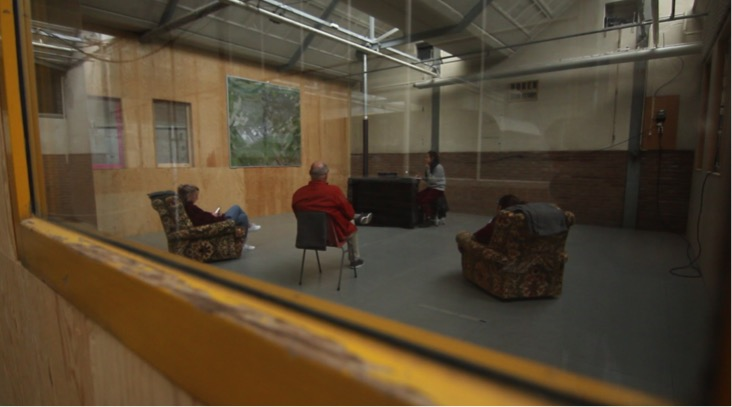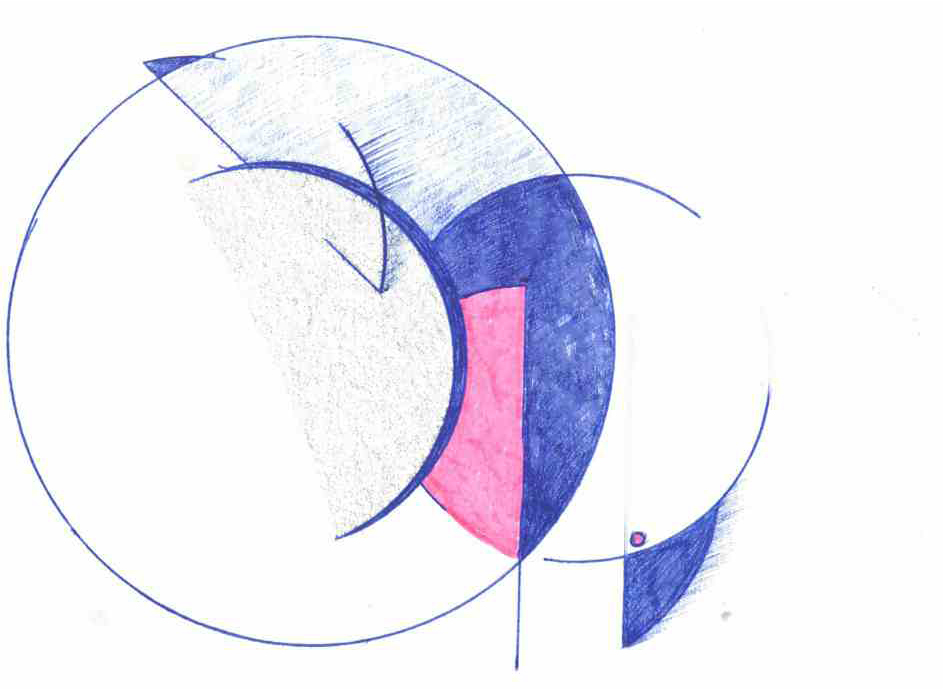With the ongoing development of a library of sampled moments – as seen in my Audio Journals - and inspired by the periphery of my audible attention, I developed a work to share with others.
By listening through my Journal, I found I could take an audible journey through time. I arranged a sequence of the collected moments to share this journey, to be played through an old radio found on location.
In order to make the Scenographic work situational (that it was of the space it occured in), I spent some time considering the space itself.
The space, directly beside Culemborg train station in the Netherlands, was positioned no more than a few meters from a train track. It shook and reverberated with passing trains. I noticed the different sounds of the trains, depending their speed and weight. Some cargo, some passenger, some intercity, some commuter. I was inspired to consider the room as a snippet on the side of this journey and imagined the space as a pulling-in of the immense energy of the trains. I found an old radio in the drawer of a desk in the space I used. It felt like a sign.
I considered the radio – that it has ‘stations’, just like a trainline. The radio can tune through its stations – something very interesting to align with an archive of moments I collect. I rigged the radio, and each station with an assigned moment in time: I titled it Radio Déjà Vu.
The presented scenography was of a composition arranged of these stations in time.
An important detail was that as the live trains passed by at huge speeds, a loop was ‘triggered’ within the radio room – sample playing at various pitches (speeds), by which the sound of a train whooshing passed seemed to push around us in the room – like the trains were causing a glitch in the timeline of the arranged radio moments. I imagined it as though the trains passing outside were trying to land us here in the present moment, or carry us somewhere else with them…
The final moment in the composition was of the present day that the spectator listened to the radio. We travelled through everyday moments, on to a train and through to Culemborg train station. We went from a time in the distance to being in the present moment.
The space was arranged for optimum listening – comfortable chairs spaced with good distance, and the idea being that only a few people should enter at a time for better listening. However, sometimes this did not work out, and I felt that the idea of taking time to settle into the work and listen to it was a foreign notion. It seemed the spectator needed something heavily from me, even though my sole purpose was to deliver the tuning of the stations in time. I found this unexpected insight to be an important one – questioning what kind of information does the spectator need? What happens if there is a human body physically there with the work – do their eyes always out-run their ears? I was pleased that many noticed the map of the aerial view of the trainline hanging in the space. It was an important visual element, reminding us that we have travelled here, to share together this snippet of time.
Many other questions arose in this work, particularly about spectatorship and performativity. I came to consider what my duty and relatability is in a piece where I am live with the works. As I had considered this work to be ‘designed’ more than ‘performed’ by me, I found some challenge in being spectated with the work. I came to face questions about what my role is, how do I engage with the spectator, and we relate through the work?




